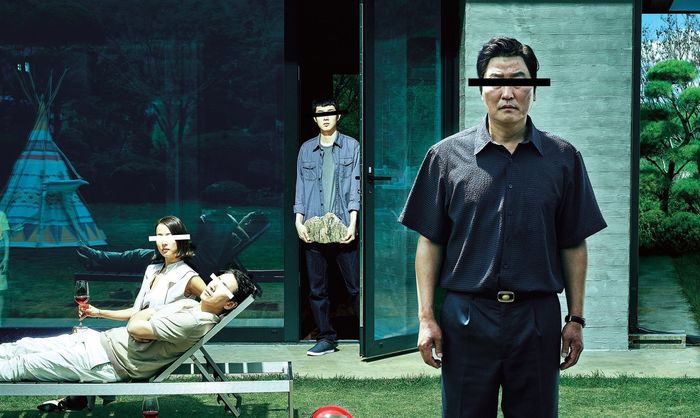What’s Next for Lesbian Cinema?
– asks Tilda Butterworth, exploring how lesbian cinema could diversify as sapphic period dramas become increasingly popular.
Anyone who has an interest in queer cinema can tell you that there are glaring similarities within the lesbian period drama genre. Leeza Isaeva’s article, The Rise of the Lesbian Period Drama, perfectly encapsulates the ways in which supposedly radical lesbian cinema is in fact repeatedly falling into the same safe subject matter and tropes — even down to how the characters interact with each other physically.
Here’s how it goes. The characters: women living alone, often by the sea, isolated from (male) society. Probably a blonde and a brunette, most likely with an obvious age difference. There will be a lot of standing uncomfortably in corners at social events, playing pianos (unused until that moment — oh, the symbolism), sketching or using film cameras (undeniably the two lesbian crafts), and gazing at each other when the other isn’t looking. Subsequently one of the protagonists will say that something they have created is bad and the other will say that they like it, thereby setting up ambiguous sexual tension. Then there will be a Shoulder Touch, and suddenly both women become aware that their desire for the other is perhaps not unrequited. You can apply this formula to the majority of lesbian period dramas — try it.
I should say that I will never complain about watching a lesbian period drama of this kind, should another appear. There is a reason why they are so popular after all — queer women love to see illicit sapphic yearning transposed into every possible historical era. However, I would question whether there is anything new to be extracted from this genre or whether filmmakers need to move on from using forbidden love as their main plot device. There is more to historical lesbians than the roles society forced them into and the ways in which they were able to covertly escape them. Surely there is more to celebrate?
Before writing this article, I wanted to see if there were any films I had missed in the genre. While searching, I noticed several things. Firstly, there are far more queer period dramas about men. Secondly, the overwhelming number of lesbian period dramas are about white women. And thirdly, I don’t recall seeing the trailers of any of the more diverse lesbian films in the cinema (back when we were actually allowed to go). I discovered that they were mostly critically well-received, but were underpromoted by streaming services; only shown in indie cinemas; or banned in their countries of origin (like 2018 Kenyan film Rafiki, directed by Wanuri Kahiu). As a result, a lot of them have fallen into obscurity.
One film I was unable to find anywhere, but is now on MUBI, is The Watermelon Woman (1996). Although it is not a period drama, it does explore the process of making a documentary about a historical lesbian figure. Cheryl Dunye, who is both the Black lesbian director of the film and its protagonist, forms a chatty, personal relationship with the viewer through her interjections and updates on the filmmaking process. She becomes fascinated by the so-called “Watermelon Woman” (Fae Richards, a 1930s Black actress who was often cast in archetypal “mammy” roles), and commits to discovering more about her. This proves to be a laborious process involving sourcing many VHS tapes, enduring problematic interviews, and trawling through poorly organised archives. Cheryl’s personal life continues alongside this. “All you do since you don’t have a girlfriend is watch those boring old films,” her best friend tells her. I’m sure many of us can relate.
“The Watermelon Woman is proof of the necessity for people to tell their own stories [...], and a sign that the cinematic portrayal of historical lesbians needs to diversify.”
During Cheryl’s search for more information about Fae, she discovers, with great joy, that she was also a lesbian. “I guess we have a thing or two in common,” she says. “The movies and women.” She is deeply perturbed by the erasure of Fae’s sexuality, the typecasting, and her lack of named credit in the films — something she attempts to rectify by foregrounding her name and her identity in her own documentary film.
The Watermelon Woman is proof of the necessity for people to tell their own stories, or stories which relate to them, and a sign that the cinematic portrayal of historical lesbians needs to diversify. Sitting down in front of her camcorder, Dunye says: “I’m going to be the one that says I am a Black lesbian filmmaker who’s just beginning, but I’m going to say a lot more and have a lot more work to do.” Dunye has since moved to directing for television, and has shown interest in adapting the works of Audre Lorde.
Lorde, the highly influential African American poet, was an out lesbian. There are several documentaries about her, notably Audre Lorde – The Berlin Years 1984 to 1992 (2012) dir. Dagmar Schultz, but no feature films. She is one of the historical sapphics I would most like to watch a biopic about, along with activist Ruth Ellis (who turned her house into a refuge for queer African Americans), actress Alla Nazimova (who coined the term “sewing circle” to refer to fellow closeted lesbian actresses), Patricia Highsmith (author of The Price of Salt/Carol, the first lesbian novel to have a happy ending), and Lorraine Hansberry (the first African American female author to have a play performed on Broadway). I hope that one day films will be made about each of them, striking the right balance between the un-romanticised and affirming; the gritty and celebratory.
The intrigue of queer period drama is probably due to the fact that in their own eras these characters had to hide who they were, and therefore it feels victorious to see them celebrated on screen now. The desire for historical films about queer people is entirely understandable, but I would argue that if filmmakers are going to respond to this desire, it should be in a way which ensures that incredibly similar narratives are not being produced over and over again. It is important for queer people to know our history, but we should take care to ensure that certain histories are not buried, and stories which could benefit from the medium of cinema are not going untold.
 Features / Should I stay or should I go? Cambridge students and alumni reflect on how their memories stay with them15 December 2025
Features / Should I stay or should I go? Cambridge students and alumni reflect on how their memories stay with them15 December 2025 News / Cambridge study finds students learn better with notes than AI13 December 2025
News / Cambridge study finds students learn better with notes than AI13 December 2025 News / Dons warn PM about Vet School closure16 December 2025
News / Dons warn PM about Vet School closure16 December 2025 News / News In Brief: Michaelmas marriages, monogamous mammals, and messaging manipulation15 December 2025
News / News In Brief: Michaelmas marriages, monogamous mammals, and messaging manipulation15 December 2025 Comment / The magic of an eight-week term15 December 2025
Comment / The magic of an eight-week term15 December 2025









